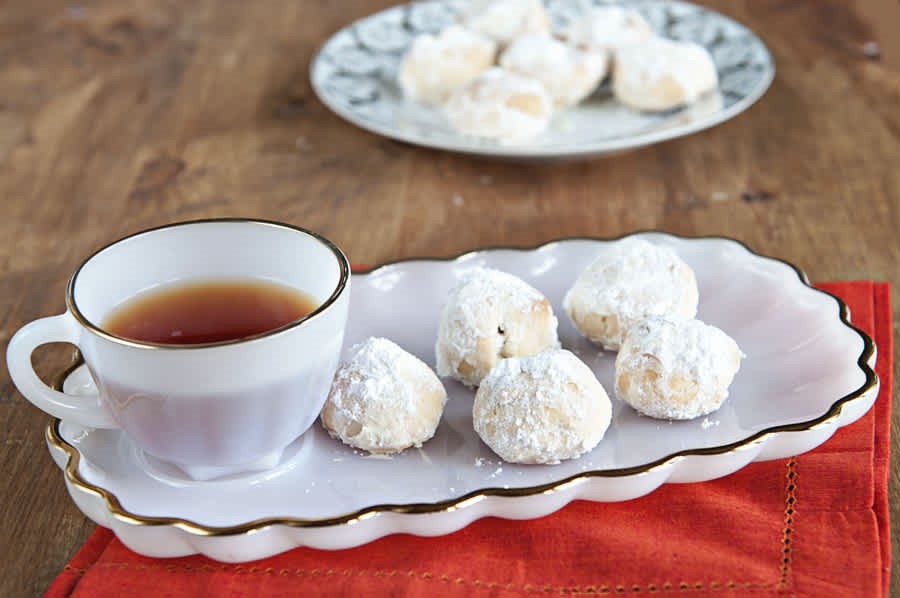Looking for world cuisine to serve at your reception? Consider Mexican Wedding Cookies! Also called “Mexican Wedding Cakes,” these spice-infused, nut filled cookies are the star of every wedding celebration! Read on to find out how they originated!

Hey, Christie!
Tyler and I are so excited to be getting married next year at Ainsworth House & Gardens!
We’d love to celebrate wedding food traditions from around the corner and around the world. Any ideas? Thanks in advance!
–Katie in Keizer, Oregon
Hey, Katie!
I certainly do! Have you though about Mexican Wedding Cookies? These cute, little snowball cookies are presented at many Latinx celebrations such as weddings, baptisms, and birthdays.
Fun fact: Prior to 1945, these delicious, spice-warmed cookies were called “Russian Tea Cookies.” during the Cold War (1945-1991) when the United States and the Communist Soviet Union (now Russia) contended for world domination, the name of the cookies was changed in the 1950s to “Mexican Wedding Cookies” to eliminate any positive praise from the name, “Russian Tea Cookies.”
So where did these nut-filled, sugar-frosted, crunchy cookies originate? According to food historians, it was medieval Arabs who baked these cookies filled with nuts, warmed by spices, and covered with white sugar. As you might know, the Arabs often traveled long routes throughout all the regions of Europe, sharing their beloved recipe for these cookies along the way.


When Europeans (such as the Spaniards) sailed to the Americas, they brought the cookie recipe with them to Mexico in the 16th. century. The recipe was adapted by bakers in each region of Mexico. Depending on which nuts grew naturally in that area of Mexico, the cookies were made with finely chopped almonds, hazelnuts, pecans, or walnuts.
It’s interesting that there are no eggs in Mexican Wedding Cookies. It’s the butter that binds the ingredients together.
As the recipe migrated north, the name for the cookies changed again. According to food historians, those who lived along the United States’ East Coast called them “Snowballs” or “Pecan Sandies.” If the baker was likely to see snow in the winter, the cookies would be called “Snowballs” because the sugar on the top of the cookie resembled snow. If the baker lived south of New England and was more likely to see sand at the beach in summer, the name of the cookies referenced the most prevalent baking nut (pecan) and the sandy look of the beach sand in summer.

If you search online, you can find several recipes. Work with your caterer if you wish to include these “melt in your mouth” cookies at your reception!
Reach out to me if you have any questions.
Your friend in the wedding business,
Christie Shyne
Images courtesy of Food.com, Ainsworth House & Gardens, and Pixabay.com.
© 2023-2024. Come Rain or Shyne, LLC. All rights reserved.




